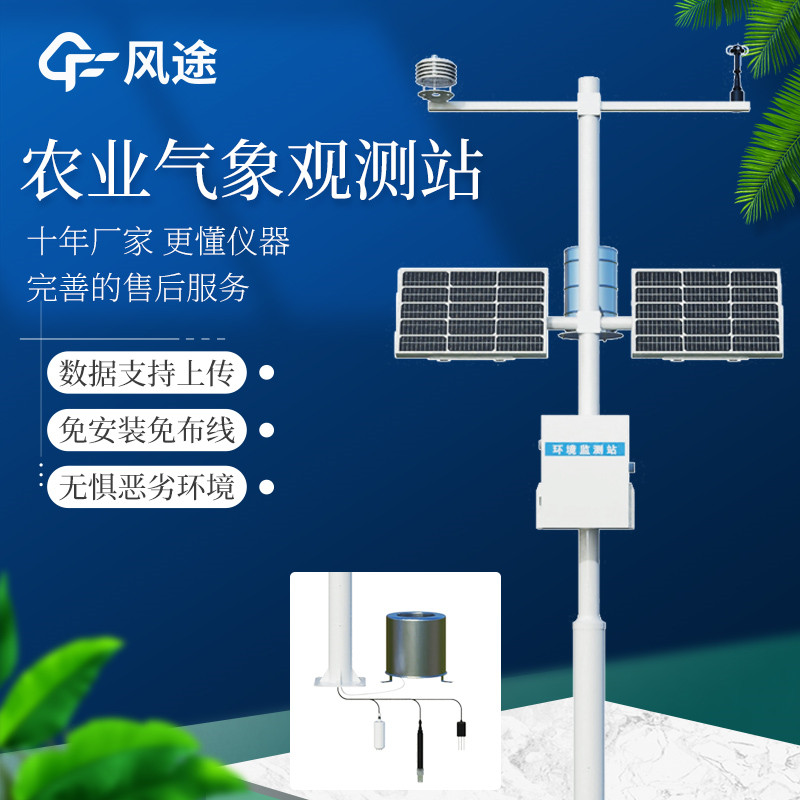An agricultural park has deployed Agricultural Weather Stations to improve the management level of crop planting. A total of 5 meteorological station monitoring points have been set up in different crop planting areas of the park. Each monitoring point is equipped with a dual-power supply configuration of a solar power supply system and a storage battery to ensure stable operation even in case of continuous rainy weather for 7 days. Each station is equipped with high-precision wind speed and direction sensors, temperature and humidity sensors, air pressure sensors, tipping bucket rainfall sensors, and solar radiation sensors.
The sensors collect meteorological data in real-time, and the data is encrypted and transmitted to the server of the park's monitoring center through a 4G communication module using the TCP/IP protocol. Professional meteorological data processing software is deployed on the server side to generate meteorological information reports updated on a minute-by-minute basis, including real-time air temperature, air humidity, wind speed and direction, rainfall, air pressure, solar radiation intensity, etc. At the same time, change curves of meteorological elements for the past 24 hours, 7 days, and 30 days are drawn.
Based on the collected data, the Agricultural Weather Stations can achieve multiple functions. When extreme weather is detected, the system automatically sends early warning text messages to the mobile phones of the management personnel. The early warning content includes the weather conditions, the expected duration, and response suggestions. According to the air humidity and soil moisture data, combined with the water demand model for crop growth, it provides decision-making support for the irrigation system to achieve precise irrigation.

Article address:https://www.sqqx.net/en/news/627.html

 +86 15898932201
+86 15898932201



